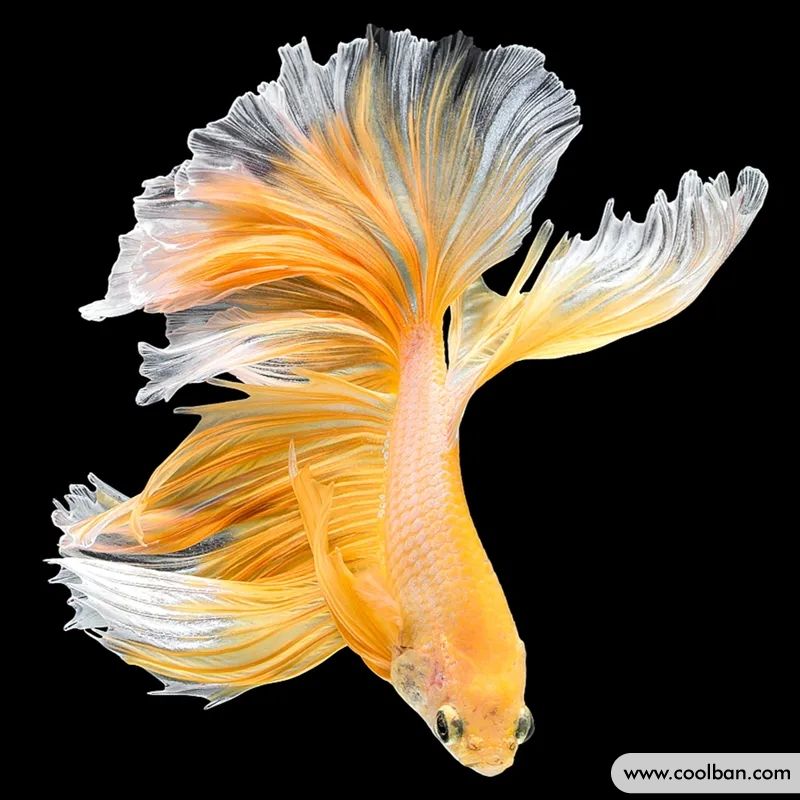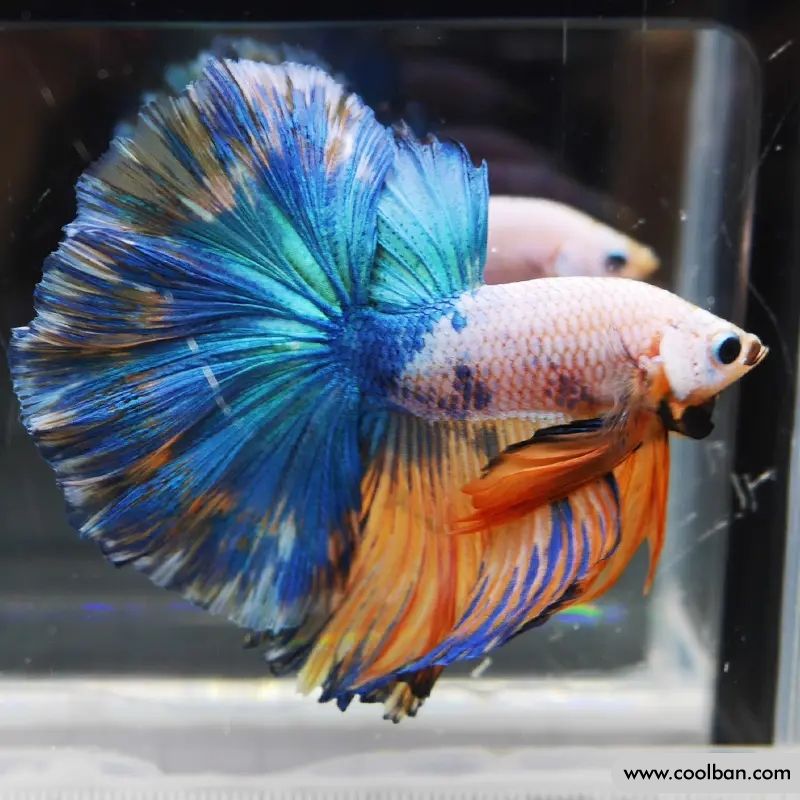Breeding of half moon fighting fish
Half-moon fighting fish can be divided into HM (half-moon) and OHM (over half-moon). HM means that the tail of a half-moon betta can reach 180 degrees when it is unfolded to look like a half moon, while OHM means that the tail of a betta fish can exceed 180 degrees when it is unfolded. Generally speaking, OHM is the best among HM. The half-moon betta is generally 8-10 cm long when it is an adult.
Although the half-moon fighting fish also has the habit of fighting fish, after observation, most of them can live in peace with small tropical ornamental fish. The main feature of the half-moon betta is that it has a special breathing organ, called an "auxiliary device", which is used to breathe air. It can breathe on the surface and is fed into an auxiliary device for gas exchange. Betta fish body dorsal ctenoid scales, elongated dorsal and anal fins, fin spines longer than fin rays, the first pelvic ray elongated into filaments, light brown body, with about 10 blue or green transverse bands, eyes with gills There are 2-3 dark oblique bands on the lid and a blue spot on the back edge of the operculum. It can inhabit sewage in swamps and ditches.

Breeding environment of half-moon betta
The suitable water temperature for the half-moon betta is 20-25 degrees Celsius. Banyue betta does not have very high requirements for water quality. Generally, the total hardness is 6-8GH, and the pH is 6.5-7.5. While males are prone to fights, they can live peacefully with most small tropical ornamental fish.
There are no specific restrictions on the container in which the half moon betta is raised, ranging from polyculture aquariums to glass tanks. However, due to their aggressiveness, they are usually kept alone in order to avoid them fighting. If you want to raise two male half-moon bettas to inspire their majesty, you can insert a non-toxic plastic plate between the glass and the non-toxic plastic plate of the fish tank, which will not only give you a pleasing look, but will not hurt the fish.
It is recommended to lay a layer of clean and thin bottom sand or colored sand at the bottom of the fish tank, and the ratio of water to bottom sand is 5:1; aquatic plants with low carbon dioxide demand such as witch hazel and black algae can be planted; in order to provide sufficient light, It is best to have a small, soft light in a small glass jar.

Feeding points for half-moon betta
The half-moon betta is a relatively easy-to-raise ornamental fish. The water quality requirements are not high. It is an omnivorous but carnivorous fish that does not choose food. Therefore, how to feed the half-moon betta is a problem that many aquarists are very concerned about.
Banyue betta is an omnivorous and carnivorous fish. It can feed on Artemia, silkworms, water fleas, etc. It can be eaten within 5 minutes of each feeding, and once a day is enough. Whole or purchased healthy bettas can be artificially fed from shallow water grass in the wild. The half-moon betta is adaptable and easy to raise. Fill the prepared glass fish tank with clean river water, pool water or tap water for more than a day, and put the half-moon betta into the tank (the water in the tank should not be too full, otherwise the half-moon betta will jump out). Stalactites and pebbles can be placed in a fish tank to create a hidden environment for the half-moon betta. One fish tank can feed two or more pairs of half moon fighting fish for viewing.

The half-moon betta has a wide range of diets. Bread crumbs, steamed bread crumbs, meat crumbs, red worms, earthworms (shredded), zooplankton and plants are its favorite bait. Each adult fish is fed 0.3-0.5g per day, divided into 2-3 times. Change the water once every 7-10 days, but during the breeding season, only half of the original water can be changed each time. Use a siphon to carefully remove the bottom of the tank so as not to damage the floating nests built by the half-moon bettas or to suck up juveniles.
After hatching, the juveniles float on the water in groups. At this time, fish them out with a net and put them in a small glass tank for special breeding. The juveniles are ground with boiled egg yolk, mixed with water to make a paste, and sprinkled on the water to eat. Adding too much egg yolk to each tank every day will lead to poor water quality due to too much bait; at the same time, green water (including phytoplankton) raised should be added to the tank, or juveniles should be directly greened in the water. Change the water every 4-5 days, and change half of the original water each time. The dirty water at the bottom of the tank sucked out by the siphon must be filtered with gauze, so as not to suck the betta fish away.
